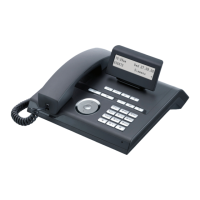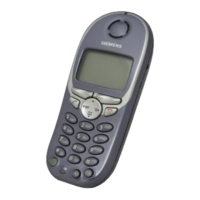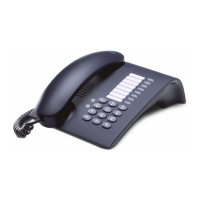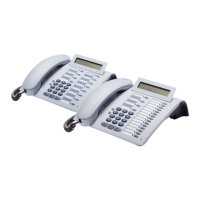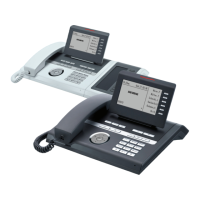Service Manual
6-249
Configuring the system specifically for the client
Comments about the system’s programming codes
The Data (Fax/Modem) option uses the same dial tones and call sequence as the public network to avoid problems in detect-
ing pauses, internal dial tones and/or duplicate calls. In addition, the override and call waiting functions are blocked in order to
prevent transmission faults.
The Answering machine option requires the same configuration as in "Data (Fax/Modem)". However, you can answer calls if
Auto-Answering is activated.
The External entrance telephone option supports up to 4 devices connected directly to analog ports A/B or in the bar of the
S
0
module, as follows:
● The external analog entrance telephone device must behave like an analog telephone
(dialing, detection and DTMF control)
● The ISDN external entrance telephone device must behave like an ISDN telephone. It
must also be controlled by DTMF signals.
Auto-Answering Mode (034)
This setting specifies the use of the Auto-Answering Mode for the telephone by using a feature code (see Functions used for
Making Calls - Speakerphone Auto-Answering Mode in the User Manual).
Pulses for call charges on an analog extension (041)
This sends pulses to be charged for calls on an analog extension (12kHz/16kHz). With this feature, an extension’s telephone
set can display the number of pulses or the amount charged for the call.
>
When connecting a fax device, no additional settings (such as Fax Detection)
need to be configured.
>
Consult the external entrance telephone manual to check available settings.
Go to the HiPath 1100 Manager folder - Advanced/System Settings/General -
"External entrance telephone" and insert the information on the entrance tele-
phone device for correct working.
Please refer to the documentation provided with the telephone set connected to the
extension to find out if a billing indication is supported and which transmission mode
is used.

